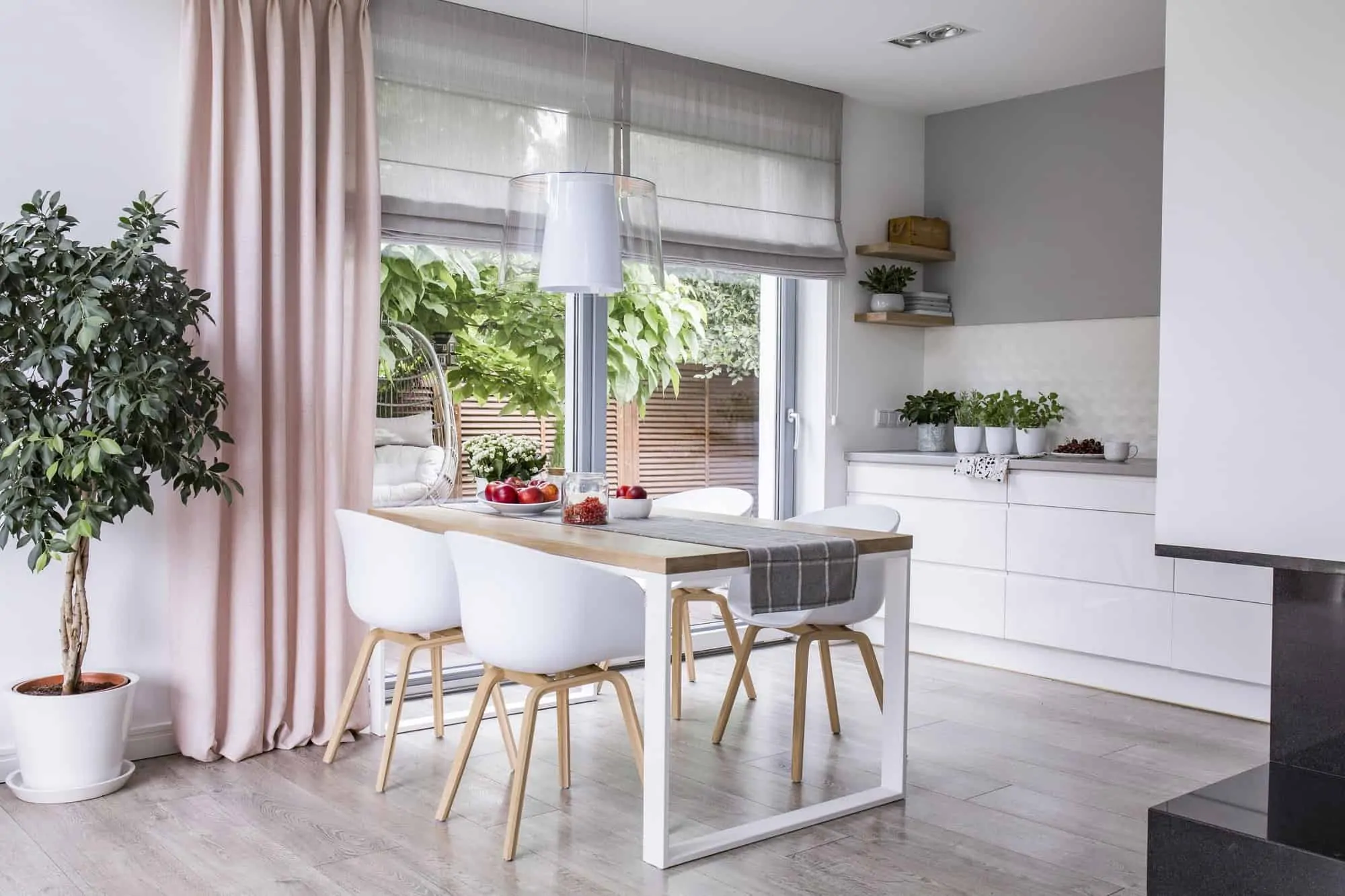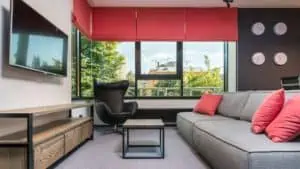The shade is a classic piece of window treatment. While the blind often takes the prize for functionality, and the curtain takes the attention for class and scale, the shade shouldn’t be overlooked as a great piece for any home. Shades are both functional and stylish. With a little bit of creativity, shades can be the window treatment that keeps a room minimal and cozy.
In this post, we’re going to take a look at different types of shades, the styles that you can pick for different rooms, and how to combine shades with other window treatments. While shades do a lot on their own, their full potential comes through when you layer them with a nice drape.
Guide to Types of Shades
Cellular or Honeycomb Shades
If a window treatment can be “having a moment,” then the cellular (honeycomb) shades certainly are. Honeycomb shades are named for their honeycomb design that stretch and compress as you move them up and down. They are popular right now because they don’t have cords, which makes them look minimal and simple, and because they are one of the most effective ways of providing insulation to windows.
There are all kinds of different honeycomb shades that you can use. There are shades that allow lots of light to go through, and there are even blackout honeycomb shades which prevent most light from getting through. The fabrics on honeycomb shades often have different types of cells. If you get a triple cell fabric, you can even increase the energy efficiency of the shades.
Pleated Shades
Similar in function to honeycomb shades, pleated shades simply move like an accordion up and down. They are less energy efficient than honeycomb shades, but the simplicity of the design makes them slightly easier to move and therefore more durable. They also have tons of decoration possibilities when they flatten out. You can easily install smart automations with pleated shades.
Wood Shades
Yes, there are even shades made out of wood that move up and down. Woven wood shades, sometimes made from bamboo, are often made from a combination of different kinds of wood and ropes. They often have different weaves. Some wooden shades are woven together quite tightly, which allows less light. When they are woven together more loosely, more light is allowed to sneak through.
Outdoor Shades
One of the most energy-efficient ways to put up shades is to put them up outside, because this absorbs the sunlight before things even get into the room. It won’t, of course, keep the heat inside though! But outdoor shades are made from really strong, thick fabric that can withstand the weather.
Choosing the Right Shade
Style
The right style of shade is whatever is just right for the room that you have it in. For many rooms, shades are an option that keep things minimal and simple. Blinds complicate the texture of the window with slats. Curtains make the windows large and loud, sweeping fabric across the frames. Shades, on the other hand, usually fit the window snugly. They don’t have too much space and texturing going on. Shades keep things simple, and are great choices for living rooms, dining rooms, bathrooms, and sunrooms.
Color
Keep in mind that shades will sometimes allow a lot of light into the room. When you have shades that are more sheer and transparent, the colors will be softened by the light streaming into the room. If the shades are closer to blackout and light blocking, then the colors will become richer and more defined.
When you want a shade that stands in contrast to the room and walls, lighter shades will do the trick. If you have white walls in the room where the shades are, then a lighter color will allow the shades to blend into the surrounding walls. If the walls are a bit darker, then a darker color blends in. When there is white walls and have a room that is maximalist and busy–like with a lot of art on the walls and many objects in the room–then a darker shade will look more natural. But if the room is more simple and minimalist–like with lighter furniture and not as much on the walls–then a lighter shade will look more natural.
Combining Shades with Other Window Treatments
Roller Shades
Most shades can be combined with other shades to provide additional ways to control the precise amount of light in the room. If this sounds like a hassle, you can always hook your shades up to smart home devices that can automatically raise and lower shades with a simple touch of a button. Roller shades are more form fitting, and can allow for additional light control. You can always get a sheer shade for the bottom and a blackout for the top. This allows you to adjust the light levels for each and every moment.
Drapes
Using shades doesn’t commit you to not using other window treatments! If you use Roman shades, or any simple shade, you can layer drapes over the top quite nicely. The trick is to make the colors complimentary. If you have a colored shade, then you will want to use a neutral drape. But, if you have colored drapes, then go with a neutral shade. Likewise, if you have color on the drapes, the design will move outward from light to room. If you have color on the shades, then the design will move the eye inward, focusing from the room to the outdoor light.
To style drapes and shades, pull the shades about halfway down and then put the drapes about halfway over the window. You can adjust as you need to, but starting halfway gives you a good point to jump off from. Shades allow you to allow in some light, while drapes give you the option of having more privacy when you want it.
Shades and drapes is a timeless combination that makes your windows look sophisticated, styled, and layered. The layers from the fabric really bring things together and allow the natural light to illuminate the colors.





